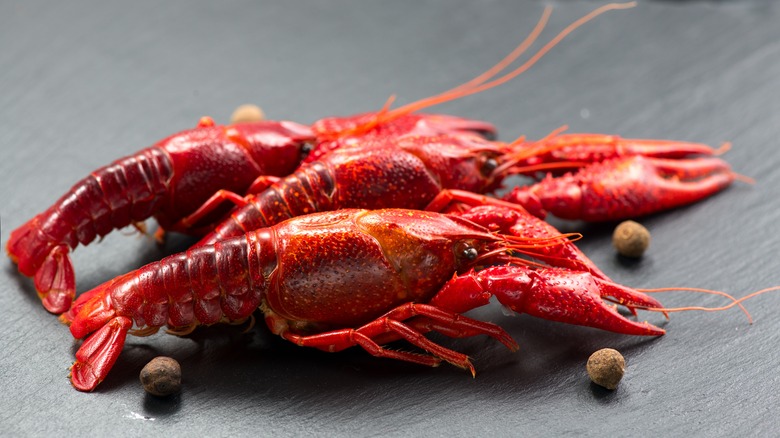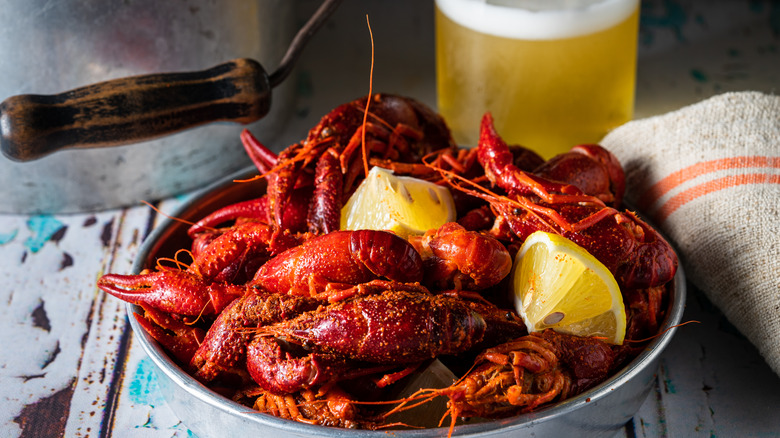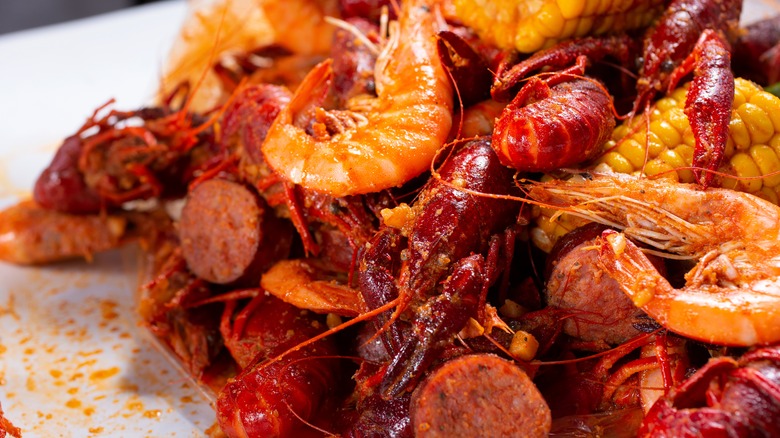What Is Crawfish Butter, The So-Called 'Foie Gras Of The Sea'?
It's hard to forget the first time you learn what foie gras really is. If you've managed to avoid the subject until now, we're obliged to report that the luxury dish is the product of gavage: the process of force-feeding ducks and geese until their livers grow extraordinarily large, at which point they're finally slaughtered and harvested for their plump organs. It's gruesome stuff. So gruesome, in fact, that New York City announced its plan to ban the practice in 2019.
Unfortunately for the ducks and geese of the Empire State, the prohibition was met with backlash from foie gras farmers in New York and beyond. The city lashed right back, calling the practice "arbitrary and capricious" in a December 2022 lawsuit against the New York State Department of Agriculture (via The New York Times). Meanwhile, the dish has been banned in California since 2012.
Even if you've never tasted it, it's easy to imagine that a dish that causes so much hullabaloo must be pretty delicious. But those who don't want to engage in animal cruelty in the name of a good meal might want to turn their attention to an under-appreciated part of the humble crawfish.
Beauty and hepatopancreas
Crawfish may look like tiny lobsters, but you typically won't find them on the menu at a traditional upscale seafood restaurant. They're more likely to frequent Cajun-style crawfish boils, which were brought to Louisiana bayous by French-speaking African-Caribbean immigrants — also known as Cajuns, or Louisiana Acadians — way back in the 1700s. The native Houma Tribe was said to have discovered the swamp-dwelling crustaceans, also known as mudbugs, a century before that.
In a standard crawfish boil recipe, pounds upon pounds of crawfish, often supplemented by shrimp and crab, grow tender and flavorful in a giant pot with red potatoes, corn, and all sorts of delicious spices. In the end, you get to wear a bib and fish the meat from the crustacean's tiny legs. This is a rewarding process, but some say the best part of the crawfish is the hepatopancreas in its noggin. Indeed, Eater Houston confirms that the organ, also known as "crawfish butter," is the ethically minded seafood lover's answer to foie gras.
The liver of the skull
What does a crawfish's hepatopancreas have to do with a duck's liver, you ask? Like the liver, the hepatopancreas "[filters] out toxins and other substances that could potentially harm the crawfish," according to Eater. As such, it takes on a rich, buttery taste that's similar to foie gras, hence its "crawfish butter" name. The frugal delicacy is meant to be sucked from the head of the crawfish, which, for the record, we also recommend doing for shrimp. "A first-time head sucker might be tempted to inhale deeply, which can result in a gnarly spray of spices that will leave them coughing and sputtering," writes Eater. Seasoned crawfish heads (pun very much intended) will tell you to pinch the head of the crawfish and try to sip the hepatopancreas slowly.
Foie gras-like crawfish butter is not to be confused with softened butter that's seasoned with crawfish and spices. A recipe for the latter, from chef Michael O'Boyle, involves combining sautéed crawfish with garlic, shallots, wine, basil, parsley, lemon juice, Worcestershire sauce, and Cajun seasoning in a food processor with softened butter. The result is great for spreading on toast. If you really want to up the ante, spread the hepatopancreas on top of your homemade crawfish butter for a meta experience.


